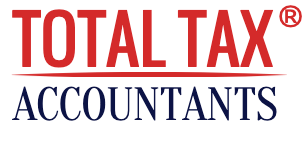
Every company has to bear expenses for running its day to day business. But are we good at managing these expenses? Lets see how we can improve the management of the company’s day to day expenses.
Analyze Your Expenses to Calibrate Your Expense Policy
An analysis of the expenses of the company is a prerequisite to the implementation of a policy of expense reports. It makes it possible to identify the most important items of expenditure, but also the abusive collaborators. It is based on these two pieces of information that you will be able to adjust your ceilings, adjust your rules of engagement or decide on amounts beyond which a hierarchical validation is required.
We have used a case of meal expenses. The study revealed that for meals taken alone, employees spent on average only 15.95 euros, 15% less than the Urssaf package. Capping meals at 22 euros is a good compromise not to frustrate reasonable employees while eradicating abusive behavior.The average basket of a business lunch amounts to 26.20 euros per guest. It is therefore recommended to introduce different ceilings according to the types of meals and the populations concerned.
Achieve Savings By Respecting Tax and Social Rules
Companies give up more than 40% of the recoverable VAT relating to expense claims. They are often content to recover VAT only on their business meals while they can also do it on meals on mission. The first explanation is ignorance of the tax rules in force. The second is related to the difficulty of the task. Depiling mountains of factories for a few euros is actually not profitable if the operation is manual.
In terms of social rules, it is forbidden for an employer to finance the same meal twice. Urssaf therefore imposes on companies either to withdraw a restaurant voucher for employees who declare a lunch as an expense report, or to retain the employer’s share of the titles received in excess on the pay slip.
Get Rid of the Paper Once and for All
Since March 2017, the law makes it possible to digitize the documentary evidence of expenses, provided to respect the rules of archiving with probative value. This regulatory change is part of a process of simplification that began a few years ago with dematerialization technologies and encouraged by the State.
From now on, it is enough for the employee to take his receipt in photo. The system retrieves the credential information and creates the expense. The paper voucher can then be discarded.
If the capture of the proof is no problem, archiving steps are more complex to set up. It is indeed necessary to affix an electronic signature to guarantee the integrity of the proof. Fortunately, all expense reporting automation solutions now incorporate this type of functionality.
Streamline and Expedite the Processing of Expense Claims
The processing of expense reports is painful, which is why everyone waits until the last minute to deal with it. Especially since many companies impose fixed deadlines for declaring, validating and reimbursing employees. Result: mass entry of expense claims, explicit validation by managers (a glance at the name of the project and the amount will suffice) and bottleneck for the accounting department which must already manage the invoicing suppliers, customers and edit reports. Spending a whole day checking expense reports is extremely tedious and a source of many misunderstandings.
For the accounting department, it is tempting to have expense reports approved by several hierarchical levels. However, a validation process that is too long is a waste of time. If the manager confirms that the expense is consistent with the employee’s mission and that the accountant finds that the policy is respected, there is no reason to impose an additional level of validation.
Processing expense claims as you spend, of course, reduces the risk of errors and streamlines the process. However, it is difficult to achieve without automation.
Control Expense Claims by Sampling
Few accountants admit to not having the time to comb through everything. Yet, the survey shows that 38% of expense claims are reimbursed without extensive controls. Sampling saves time while increasing the quality of control.Here are four types of expense reports to focus on: out-of-pocket expense claims, the highest, above-average fees, and expenses for young recruits.
Expense Claims that do not Follow the Rules of the Fee Policy
Easily identifiable, these are mainly expenses made on weekends, duplicates, invitations between employees, etc. especially by your most lavish employees.On average, 73% of expenses are incurred by 20% of employees. A quick cost analysis of this category of employees helps isolate those whose habits are clearly outside the norm. It is better to spend time reminding people to spend more money than stalking a few Euros on subway notebooks.
Excessive Expense Reports
Statistically, above average expense accounts represent less than 30% of expense claims. If there are excesses to correct, this is where they will be the most important.
Expense Reports of Newly Arrived Employees
Finally, the expenses of the new recruits are to be watched closely. This is the opportunity to train them on the rules of the company and to make them aware of the importance of establishing own expense reports.
Conclusion
Expense reports are a cost item that is important to control. This necessarily involves defining a cost policy that includes ceilings adapted to different populations, compliance with regulations and the implementation of simple processes.
Enforcing the company’s rules of engagement, saving time on the control of expense claims or recovering VAT, while relieving operational teams of this administrative task is not easy without tools. Fortunately we are in the 21st century, the market is full of solutions that automate many of these tasks.
To go further, here are 10 tips to help you optimize your expense management process. Analyze them, test them, apply them.


